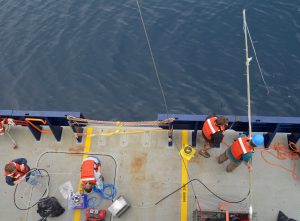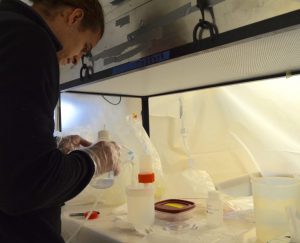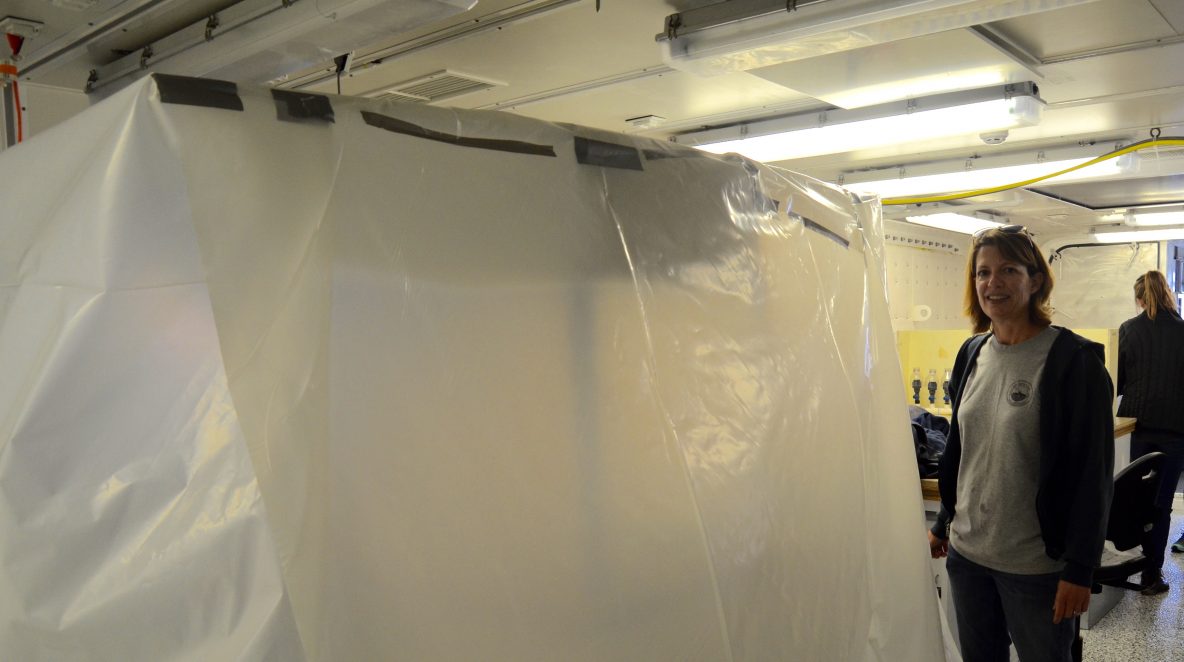
Scientists set up to bring metal-free water onboard.
R/V Sally Ride has its first bubble! It consists of a fort of plastic sheeting with filtered air fed in through a flow hood to create positive pressure (see header photo). Dr. Kathy Barbeau and her graduate students set it up in the wet lab in order to keep their work area clean of contamination. Their experiments focus on such low levels of metals, in this case iron, that ambient levels and particles around the ship could interfere. In order to collect the seawater they needed, they rigged up an all-plastic system that was lowered into the ocean on the starboard side of the ship. Held a few meters away from the hull and a few meters below the surface, they pumped water into a carboy. The seawater that comes into the lab flows through metals pipes, which again would add contamination.

Inside the bubble, grad student Kiefer filters seawater to collect the pellets to be studied.
They are studying the iron levels in fecal pellets of copepods and euphausiids (krill) in order to understand the cycle of trace metals in the ocean. This is part of a collaboration with Dr. Mark Ohman’s lab at Scripps. Both lab teams are onboard R/V Sally Ride collecting and processing samples. Bongo nets are towed over the starboard side of the ship, and the catch is rinsed down into cod ends, baskets at the end which can be brought right into the lab. In this case, copepods and euphausiids are separated out from other critters and kept in seawater rich in phytoplankton (their food source) in a walk-in cold room in the lab.
On a longer cruise, trace metal work would likely be done in a lab van stored on the ship’s back deck. A container van can be converted into a clean lab, allowing for a contamination-free environment for scientists to work. R/V Sally Ride is designed to accommodate countless setups in order to meet the scientists needs.

